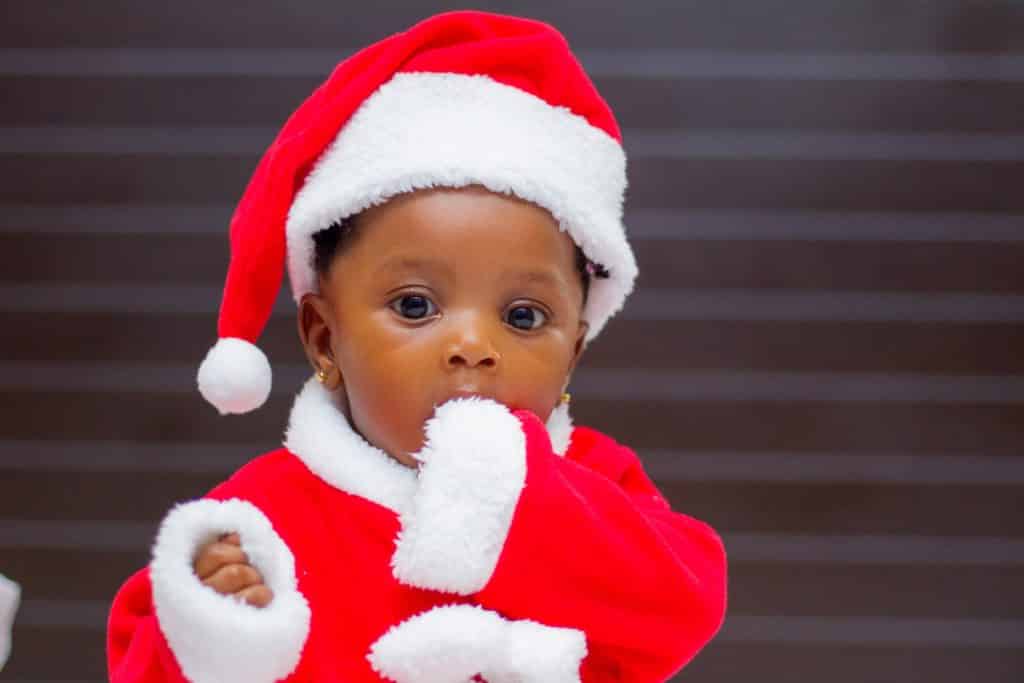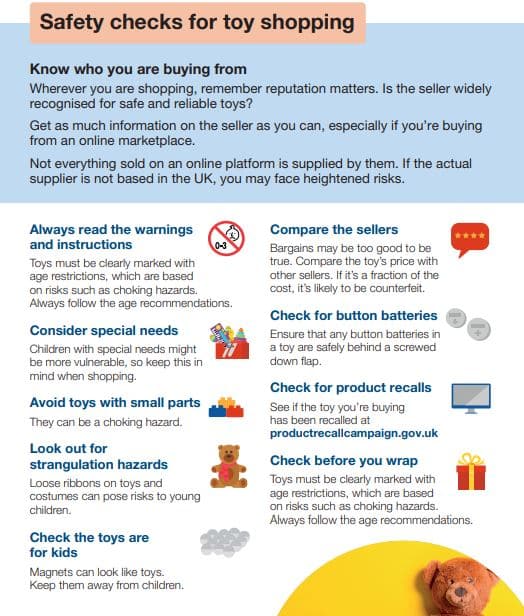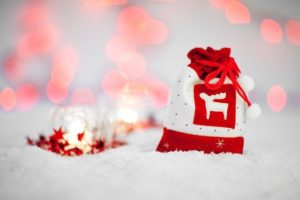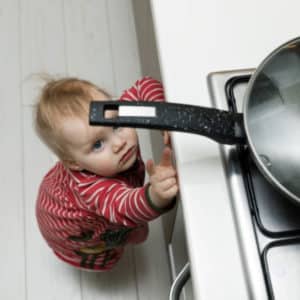Busy houses, big meals and boozy parties are part and parcel of Christmas for many people. While all of this can be a lot of fun, the nation’s favourite Christmas activities do carry some risk of accidents. But every year, an estimated 80,000 people head to hospital with injuries such as falls, cuts and burns during the festive period, according to the NHS. About 6,000 of these need to be admitted.
If you are unsure if you need to attend A&E or need to see a pharmacist for any medication during the festive period find out where your local pharmacist is and their opening hours by adding your postcode here.
To help you avoid a less-than-festive trip to A&E, take a look at ROPSPA’s list of common accidents that occur at Christmas, and their elf and safety tips:
How to spot fake toys
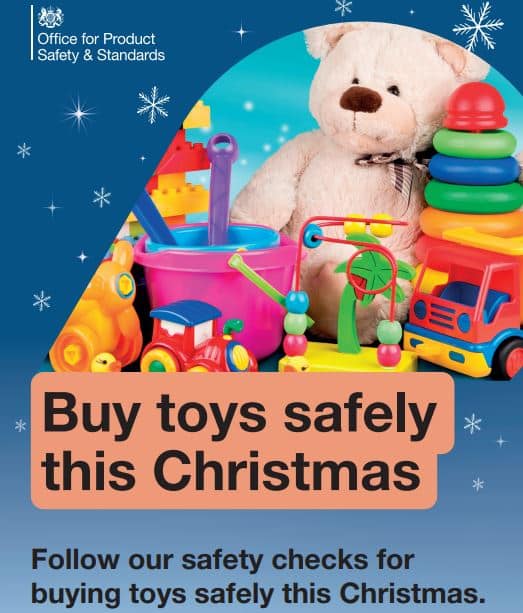
Fake toys can be bought online and from dubious retailers. Despite looking like the genuine article, often these phoney items are low-quality, are missing parts or quite simply do not work. Worryingly, in some cases fake toys can cause significant injuries and accidents.
Here are some tips to follow when Christmas shopping for the kids:
- Check for the CE symbol. This is a claim by the manufacturer that the toy meets regulatory requirements. Products without the CE mark may not be intended to be used as toys, but are novelties which may not be safe for children to play with
- Look out for bad grammar or misspellings on the packaging – this may indicate the toy is a fake. If in any doubt refer to the official website for the manufacturer and compare the packaging, colours and descriptions with authentic merchandise
- Buy from suppliers with a good reputation for safe and reliable toys. Many will be members of trade associations whose rules call on them to meet high standards
- Be suspicious if you see a product for sale that is vastly cheaper than you have seen it elsewhere. This could be a tell-tale sign that the item is a forgery.
Christmas Decorations & Novelties
Christmas decorations and novelties come in all shapes and sizes, and many of them look like toys and are attractive to children. But the problem is, they don’t adhere to the same safety standards as toys, and so should not be given to children to play with.
Children under 36 months are at the greatest risk, as the most common problem is decorations having parts that can easily be pulled off and put in the mouth, posing a choking risk.
To ensure you know what you are buying, check the small print on labels. Phrases such as “this is a decoration, not a toy”, “keep out of reach of children”, or “for use as a decoration only” will mean the product does not adhere to toy safety standards.
- Lights can be particularly dangerous download the ROSPA guide on Christmas lights here.
- Watch this disturbing video from Fire Kills about how quickly a fire can take hold
Slip and Trips
As with other times of year, slips and trips are a major source of injury. Crowded houses, presents on the floor, discarded wrapping paper and slower reactions times caused by alcohol can all lead to accidents. Older relatives and under-fours are particularly vulnerable to a fall.
Elf and Safety tips: Tidy up regularly, especially after unwrapping gifts, don’t leave things on the stairs to be taken up later, and wipe up kitchen spills immediately.
Cuts
According to a recent survey of 2,000 adults, 49 per cent of respondents said they had suffered an accident while preparing Christmas food – one in five cutting themselves while chopping vegetables. Many more injure themselves while trying to hack through packaging to get to their presents.
Elf and Safety tips: Always use the appropriate tool for the job – a saw to trim the Christmas tree, scissors to open plastic wrapping and screwdrivers for turning screws. Try and keep the kitchen clear and remember that alcohol and cooking don’t mix.
Falls
The NHS has reported that, in recent years, as many as 2.6million people have fallen off a stool or ladder while hanging up Christmas decorations. Another survey of 2,000 UK adults found that 1 in 50 has fallen out of the loft while bringing down tinsel, baubles and other decorations.
Elf and Safety tips: Make sure ladders are stable and avoid over-reaching for items. Don’t leave electrical cables trailing across the floor, and ensure that children are wearing helmets before they take their new bikes for a spin.
- For more advice about how to avoid falls head to the RoSPA advice pages.
Burns and Scalds
The NHS treated more than 15,000 patients for burns and scalds in 2017, many of which were preventable. At Christmas, families and friends gather together to prepare big meals and the kettle is hardly ever off. Moving trays of hot food in crowded houses increases the risk of a burn, and a cup of tea will still severely scald a small child up to 30 minutes after it has been made.
Elf and Safety tips: Keep children out of the kitchen. Use the back hobs if possible, turn saucepan handles inwards, and take extra care when removing trays from the oven. Don’t walk around the house with cups of tea or leave them unattended in reach of children.
Fires
According to the fire service, there were 95 house fires each day in December in 2017-18, and people are 50 per cent more likely to die in a house fire over Christmas than any other time of the year. Candles and log fires are usually the biggest cause over Christmas.
Elf and Safety tips: Never remove batteries from smoke alarms to power toys. Ensure your smoke alarms are in good working order and plan a family escape route in case of fire. Keep candles well away from the tree, cards or combustible items like curtains, and never overload electrical sockets or extension cords. Remember to turn off Christmas lights at night or when leaving the house.
Electric Shocks
Christmas lights spend most of the year packed away in lofts and cupboards. During the 11 months of the year that they are locked away, they may have become electrically unsafe. Remember electricity and water do not mix – between 1997 and 2010 26 people in the UK died after watering their Christmas tree while the lights were switched on.
Consumers have been warned about buying Christmas lights from online marketplaces such as eBay, after Which? found half of those tested caught fire or risked causing shocks.
Elf and Safety tips: Replace your Christmas lights if they show any signs of wear and tear, especially on the cables and plugs. Buy your lights from a reputable outlet and look for BS Kitemark. Never insert bulbs while the lights are on. For added protection, install an RCD (residual current device) to interrupt the electricity supply if something goes wrong.
Choking
Owing to their inquisitive nature small children are notorious for putting things in their mouths, and with so many more novelty items around at Christmas the risk of choking increases. Fairy light bulbs, small baubles and toy parts can easily be swallowed.
Elf and Safety tips: Make sure all toys are age appropriate. Watch out for novelty baubles and buttons on festive clothing. Hang small baubles on the higher out-of-reach branches and keep an eye out for stray nuts, cherry tomatoes and grapes on the floor after festive feasts.
Button Batteries
Button, or coin, batteries are extremely dangerous to children if swallowed and can be found in toys, remote controls, musical greetings cards and a number of household appliances. Button batteries can do serious damage to the gastrointestinal system because when combined with saliva, the electrical current from the battery produces caustic soda that burns through the throat or stomach, which can potentially be fatal.
Elf and Safety tips: Make sure that powered toys and small electronic devices have lockable battery compartments. Be extra vigilant with musical greetings cards, flameless candles and remote controls as these do not always have lockable compartments. Always lock away spare button batterie
Eye injuries
Champagne corks are a common cause of seasonal eye injuries. The carbon dioxide contained in a 750ml bottle has a pressure of 6.2 bar, almost three times that of a car tyre, which can shoot a cork up to a height 1.3 metres. This can rupture an eyeball or detach a retina. Christmas tree branches and bursting balloons are also the common causes of eye damage. RoSPA has previously warned about giving laser pens as gifts because if they are shone directly into someone’s eyes they can cause blindness.
Elf and Safety tips: Make sure you keep your champagne chilled, as the cork of a warm bottle is more likely to pop unexpectedly than that of a cold one. When you are uncorking the fizz, keep the bottle pointed away from you and other people at an angle of 45 degrees, and place a napkin over the top to give extra protection while slowly easing out the cork. Trim back any protruding Christmas tree branches and don’t over-inflate balloons.
Alcohol Poisoning
Figures from the Department of Health in 2014 show that each year nearly 4,000 children are taken into A&E suffering from alcohol poisoning. Symptoms include confusion, vomiting, seizures and hypothermia, and in extreme cases alcohol poisoning can lead to unconsciousness, coma and death.
Elf and safety tips: Remember, home measures can be three times larger than those in pubs. Put alcohol away and clear away half-filled glasses at night. Early-rising toddlers can be lured by pretty bottles and glasses and may finish off the remains of any drinks. Keep alcohol out of reach of children, ideally in a lockable cabinet
Back injuries
Extra sleep in the holidays can play havoc with spines, warns the British Chiropractic Association. Poor posture, slouching in chairs in front of the box, can trigger aches and pains, while lifting heavy parcels, moving furniture and struggling with Christmas trees can lead to back problems.
Elf and Safety Tips: Keep an eye on your posture, sit up straight with your feet on the floor as you watch TV. Put some thought into how you will lift something before you actually do so, bending at the knees and not at the waist. Remember to stay active and consider taking a festive stroll to get the steps in.
Travelling
The odds of being in car accident with a drink-driver rocket as Christmas approaches, while statistics from the Department for Transport show a quarter of all accidents that occur the UK’s motorways and trunk roads are sleep related. Having a view obstructed by a boot-full of presents or a Christmas tree can be also be dangerous.
Elf and Safety tips: It is best to avoid alcohol completely if you are planning to drive, so be aware that some Christmas puddings could leave you over the limit after a generous helping. If you’re travelling on a long journey, take a break every two hours to avoid fatigue. Get your tree delivered, or if you must drive it home secure it well and ensure it doesn’t block your lines of sight.
- For more advice about how to stay safe at Christmas visit the RoSPA website.


